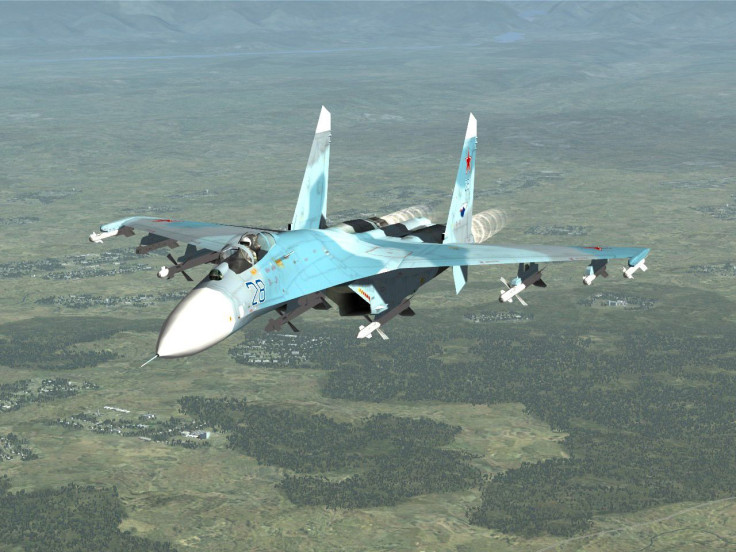War In Crimea: Lock On, The Video Game That Foresaw It 11 Years Ago

In 2003, Ukraine, independent since the 1991 dissolution of the Soviet Union, was calm. The Orange Revolution, the first stirring of the sentiments that would lead to the current upheaval, was still a year away.
The world then was focused instead on Iraq, where a U.S.-led invasion had opened a new front in America's global war on terror. And yet that year, a group of Russian video-game designers came up with a scenario for a future Ukrainian war that looks chillingly prescient today.
In November 2003, Ubisoft Entertainment SA (EPA:UBI) released the first version of Lock On: Modern Air Combat, a complex flight-simulation game for the PC featuring ultra-realistic graphics and billed at the time as the world's best in its genre. Designed by the Moscow-based Eagle Dynamics, LOMAC -- as it became known among flight-simulation devotees -- featured a ground and naval war as well as air combat.
And it was set in Crimea. More than a decade before Russian forces and Ukrainian army units would face off there, LOMAC imagined a world where the Black Sea peninsula was the theater of a conflict between the U.S. plus its NATO allies and Russia.
In the world of LOMAC, Ukrainian forces could fight either with the Russians, as seemed possible in 2003, or against them, as is far more likely today. The geopolitically savvy programmers even foresaw the risk of a regional conflagration, adding computer-controlled aircraft for a bevy of neighboring countries including Georgia and Turkey in addition to NATO forces from Canada, Great Britain, France, Germany, the Netherlands, Belgium, Denmark, Norway, and Spain, all participants in the alliance's air wars over the former Yugoslavia and Afghanistan (with the glaring omission of the Italians, who fought in both, and the bizarre addition of the Israelis, who took part in neither.)
For an added chilling touch of contemporary relevance, players can fly in and out of Sochi, where the Winter Olympics ended last month just days before the Ukrainian conflagration engulfed Crimea.
LOMAC players at the time reacted with some puzzlement to the decision to base the conflict in Crimea. After all, Russia had fought as recently as 2000 its second war against Muslim radicals bent on independence in Chechnya, not far from the game's theater. It seemed far more likely that Russians would keep on fighting the Chechens rather than focus their attention on then-peaceful Ukraine, with whom they enjoyed cordial relations within the post-USSR Commonwealth of Independent States.
Today, LOMAC has evolved into the Digital Combat Simulator series, and still offers the chance to fight a Crimean-focused war. The game's developers haven't lost their knack for political relevance: the scenery has been expanded to include part of the Caucasus, and players can re-fight the actual Russian-Georgian war of 2008.

© Copyright IBTimes 2024. All rights reserved.






















